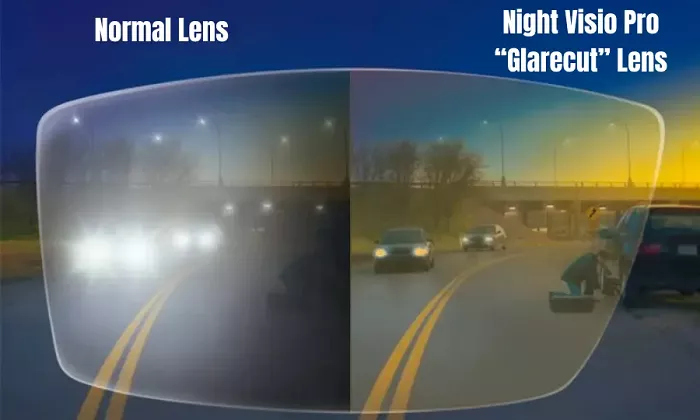Driving at night can be challenging, especially for individuals with astigmatism. Astigmatism is a common vision condition that causes blurred or distorted vision due to an irregular curvature of the cornea or lens. This irregularity can lead to increased glare and halos around lights, making night driving particularly difficult.
Fortunately, specialized night driving glasses can help alleviate these issues by reducing glare and enhancing visual clarity. This article explores the best night driving glasses for astigmatism, providing insights into their features, benefits, and considerations to help you make an informed choice.
What is Astigmatism?
Astigmatism occurs when the cornea or lens has an irregular shape, preventing light from focusing properly on the retina. This leads to blurred or distorted vision at all distances. Common symptoms include eye strain, headaches, and difficulty seeing at night.
Night Driving Difficulties with Astigmatism
Individuals with astigmatism often experience increased sensitivity to light and glare, especially from oncoming headlights and streetlights. This can cause halos, starbursts, and reduced contrast sensitivity, making it harder to see road signs, pedestrians, and other vehicles. These challenges can lead to increased eye strain and fatigue during night driving.
Features to Look for in Night Driving Glasses for Astigmatism
When selecting night driving glasses to manage astigmatism-related challenges, consider the following features:
1. Anti-Reflective (AR) Coating
AR coatings reduce reflections from both the front and back surfaces of the lenses, minimizing glare from headlights and streetlights. This enhances contrast and visual clarity, making it easier to see in low-light conditions.
2. Yellow-Tinted Lenses
Yellow or amber-tinted lenses can improve contrast and depth perception by filtering out blue light. This can be particularly beneficial for night driving, as it reduces glare and enhances visual acuity.
3. Polarized Lenses
Polarized lenses reduce glare from reflective surfaces like wet roads and car hoods. While they are more commonly used for daytime driving, some night driving glasses incorporate mild polarization to help with glare reduction without significantly darkening the view.
4. Prescription Compatibility
For individuals who already wear prescription glasses, it’s important to choose night driving glasses that can either be customized with your prescription or designed to fit over existing eyewear.
Top Night Driving Glasses for Astigmatism
Based on the features mentioned above, here are some top-rated night driving glasses suitable for individuals with astigmatism:
1. Drive Bright Night Driving Glasses
Drive Bright glasses are designed specifically to reduce glare from LED headlights and streetlights. They feature advanced GlareCut technology and are available in both full-frame and clip-on styles, making them compatible with prescription glasses.
2. BLUPOND Night Vision Glasses
BLUPOND offers night vision glasses with yellow-tinted, polarized lenses that reduce glare and enhance contrast. They are lightweight and come with a semi-rimless frame for a wider field of vision.
3. Zenni Optical Night Driving Glasses
Zenni Optical provides customizable night driving glasses with options for AR coating and yellow-tinted lenses. They offer prescription lenses tailored to individual needs, making them a good choice for those with astigmatism.
4. IILumin Night Driving Clip-On Glasses
These clip-on glasses are designed to fit over existing prescription eyewear. They feature yellow-tinted lenses that reduce glare and improve night vision, offering a convenient solution for those who already wear glasses.
Additional Tips for Night Driving with Astigmatism
Beyond selecting the right eyewear, consider the following tips to improve night driving safety:
- Regular Eye Exams: Ensure your prescription is up-to-date to maintain optimal vision.
- Clean Lenses and Windshields: Keep your glasses and car windows clean to reduce glare and improve visibility.
- Adjust Car Lighting: Properly align your headlights and dim dashboard lights to minimize glare.
- Avoid Looking Directly at Oncoming Lights: Shift your gaze slightly to the side to reduce the impact of bright headlights.
Conclusion
Night driving with astigmatism can be challenging due to increased sensitivity to glare and reduced visual clarity. However, with the right night driving glasses featuring anti-reflective coatings, yellow-tinted lenses, and prescription compatibility, you can significantly improve your night driving experience. Always consult with an eye care professional to determine the best eyewear solution tailored to your specific needs.


